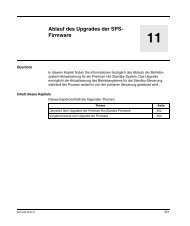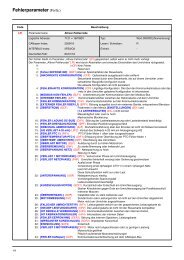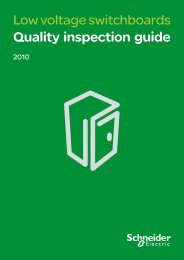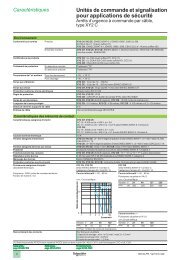Altistart 22 - Schneider Electric
Altistart 22 - Schneider Electric
Altistart 22 - Schneider Electric
- No tags were found...
Create successful ePaper yourself
Turn your PDF publications into a flip-book with our unique Google optimized e-Paper software.
Accepted to the Information Systems Education Conference (ISECON 2006), November2-5, 2006, Dallas, Texas, USASubcategoryPerspectivesanddynamicsDevelopedunderstandingof differentperspectivesMotivationPedagogySocialrelationsHeterogeneityTable 1. Identified strengthsCondition:Semirandomlyformed projectgroupsPossibilitiesfor discussingdifferent perspectivesGroup dynamicsAuthenticFunConflict generativeOpportunitiesin meetingnew peopleDifferent preknowledgeand motivationConsequence:Effects onlearningPreparedstudents forworking lifeStimulatedlearningImprovedsocial skillsStudentswith lowerlearning capabilityhavelearned fromstudentswith a highercapabilityThe final sub-category “heterogeneity”means that mixing students with differentpre-knowledge and motivation has resultedin students with a lower learning capabilitylearning from more able ones. A dominantshare of the students (85 percent) agreedabout “semi -randomly formed projectgroups imply that students with lower preknowledgecan learn from students withhigher pre-knowledge”. The latter observationcan be seen as positive and negative,positive in the sense that students interactsocially in groups (cf. PBL above), constructknowledge and help each other to learn(Hartley, 1997). This observation also supportsthe fact that teachers in higher educationcannot take for granted that all studentswill share the same commitment or loyaltyto the project group (Hartley, 1997). This ispart of the negative side concerning differencesin knowledge and motivation that isfurther described below as free riding.Identified problemsWe have also identified a number of problemsexperienced (see Table 2). The identifiedsub-categories classified as problemsare “coordination”, “heterogeneity”, “motivation”and “social relations”.The first sub-category “coordination” has todo with the practical organization of PROW.Another way of forming student groups is tolet the students themselves form the groups.Often this way of forming groups results instudents that have the same gender, age,interest and living in the same area are joiningthe same group.An identified problem when creating projectgroups semi-randomly is that there are differentwishes about working times, there areconflicting activities outside the universityand a geographical distance between theproject members. Different wishes aboutworking times could be that some studentshave a family and therefore had problemswith late working times. Another differenceis that in our university some students liveon campus whereas others live in their ownhomes both in the city and in other cities.This means that some students have a largergeographical distance to the universityand therefore prefer to work with studentsthat live in the same area. These differentpreferences have obstructed learning andhave lead to group conflicts and a noncreativegroup climate.82 percent of the students claimed thatsemi-randomly formed project groups couldimply that project members have differentwishes about working hours and 78 percentagreed about different wishes about workingplaces. As a consequence, 81 percent of thestudents agreed that project groups havecoordination problems due to working hoursand working places and that this fact impliesan increased risk of group conflicts and reducedlearning. It is clear that differentwishes about working times, conflicting activitiesoutside the university and geographicaldistance between project members, obstructedlearning due to group conflicts andnon-creative group climate. The aspect ofcoordinating project group-work in time andspace is not exhaustively investigated in theliterature. Our findings show that this aspect

















